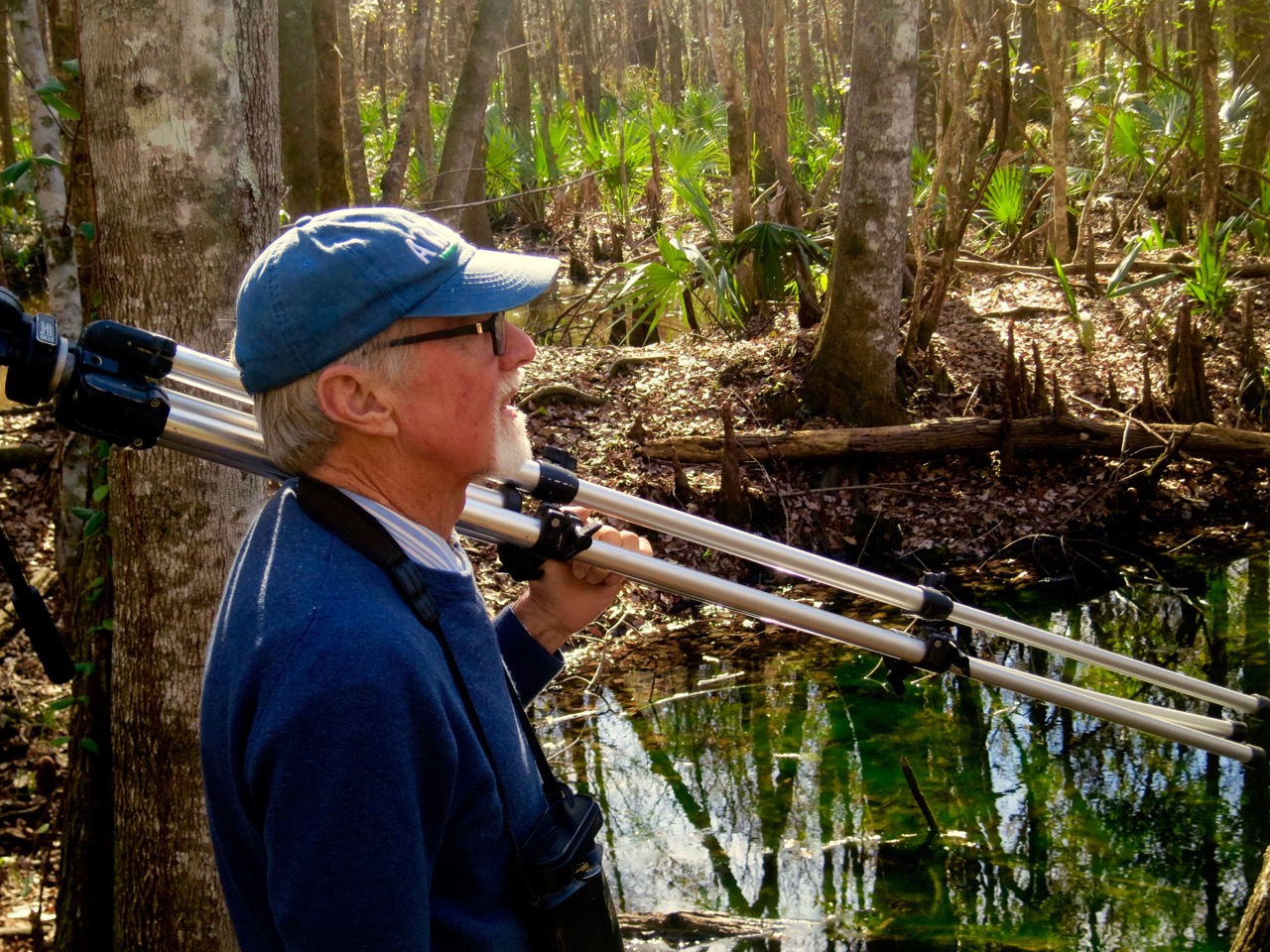 Photo by Bert Keller, I'On Swamp
|
I'm a lifelong birder and nature enthusiast. Until recently, I taught Animal Behavior, Conservation Biology, Ecology, and Ornithology
at the College of Charleston. I'm a native South Carolinian, but have also lived for long stints in Oregon, and in New Mexico, where
I got my Ph.D. My research interest is bird vocalizations. You can check out my work at Applied Bioacoustics.
|
The minimum duration of a trip is two hours for a brief foray from downtown Charleston to Mt. Pleasant (salt marsh)
or to Folly Beach (ocean, dunes, salt marsh). To get out of the metro area will require at least four hours.
Six is better and eight is ideal.
I will pick you up and drop you off at your lodging or residence. In most cases, we'll have to do a bit of driving to get
to the best birding spots, but the time will be well spent discussing what we're going to see and Lowcountry Natural History.
If you're interested I can bring you up to date on the latest changes in bird taxonomy. I keep up with it,
and can explain why it keeps changing. Before you know it, we'll be at our destination.
To establish contact, email sc at archmccallum.com. Include your phone number if you want me to call back, otherwise I will email you.
Thanks, and good birding!
|
|
2-hr roundtrip: MT. PLEASANT MARSHES: Clapper Rail (year-round),
Marsh Wren (summer), Hooded Merganser (winter), Marbled Godwit and other shorebirds (low tide, winter)
2-hr roundtrip: FOLLY BEACH: Painted Bunting, Eastern Willet and Wilson's Plover (summer), Western Willet, Black Scoter, and loons (winter) 2-hr roundtrip: HEADQUARTERS CAUSEWAY: Seaside Sparrows (singing), Eastern Willet, and Black-necked Stilt (spring and summer), shorebirds (nearly year-round) |
A Seaside Sparrow Sings in Charleston
|
|
The Francis Marion National Forest occupies 258,864 acres (1,050 km2) just northeast of the metro area.
It is the destination for the two shorter trips. They can be combined into one 4.5 hour trip.
Alternatively, a six-hour (minimum) trip to Santee Coastal Reserve
will net all the birds of the Francis Marion plus many water birds.
3-hr roundtrip: PINE FOREST BIRDS: Red-cockaded Woodpecker (year-round) and Bachman's Sparrow (spring and summer) 3-hr roundtrip: BROADLEAF WOODS: Ovenbird, Worm-eating Warbler, Prairie Warbler, Prothonotary Warbler (spring and summer) 6-hr roundtrip: SANTEE COASTAL RESERVE: All species above plus Bald Eagles and many herons (year-round), shorebirds and ducks (winter), Black-necked Stilts and Swallow-tailed Kites (summer). |
A Bachman's Sparrow Sings in Francis Marion National Forest
|
The ACE Basin is a the East Coast's largest protected wetland area. Former rice fields have been converted to
freshwater wetlands managed for waterfowl, and many other species come along for the ride. Two Wildlife Management
Areas (WMAs) managed by the South Carolina Department of Natural Resources, Bear Island and Donnelly, provide excellent
views of waterbirds, while the Edisto Nature Trail is the best place to see southern warblers, and Caw Caw County Park
is excellent for kites in summer. Four hours is the minimum round trip for a visit to the ACE. Below are some sample
itineraries.
4-hr roundtrip: EDISTO NATURE TRAIL with one add-on. The Nature Trail is the closest part of the ACE, and from April through June is excellent for Swainson's and Hooded Warblers, with Kentucky and Prothonotary likely. Add-ons could be a quick stop on the way for singing Seaside Sparrows or a 30-minute stop on the way back at Caw Caw for both kites. 4-hr roundtrip: DONNELLY WMA (nesting Wood Storks, Purple Gallinules, and Black-bellied Whistling-Ducks) OR BEAR ISLAND WMA (American Avocets, Tundra Swans, American White Pelicans, Bald Eagles) for whichever waterbirds are in season. Which place to go is a last minute decision because it depends on water levels in the impoundments and which rarity (e.g., Ruff, Great Kiskadee, Eurasian Wigeon) has most recently been seen. 6-hour roundtrip: DONNELLY WMA AND BEAR ISLAND WMA . Adequate time to do both justice. 8-hour roundtrip: Add Caw Caw County Park to Donnelly and Bear Island. |
Waders Feasting at Bear Island Wildlife Management Area
American Avocets are present at Bear Island WMA every winter.
|